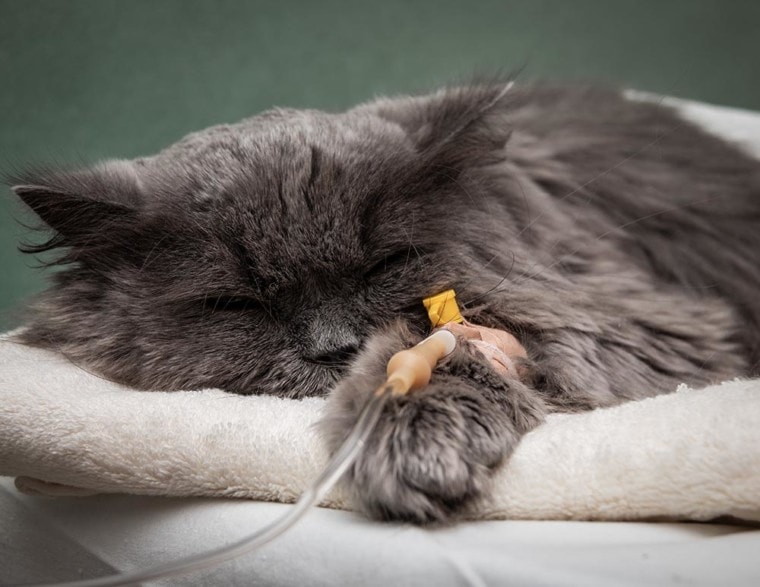
Cats are notorious for hiding their illnesses, so it can sometimes be challenging for cat owners to recognize when their companions are sick. Some general signs of an ill cat include changes in their appetite or thirst, weight loss, hiding, and sleeping more. It is important for cat owners to be aware of the most common cat diseases and illnesses.
Here are some of the most common conditions in cats and the typical signs to watch for.
The 7 Common Cat Diseases & Illnesses
1. Dental Diseases
One of the most common conditions that cats can experience is dental disease. This condition is especially common as cats age, especially if they’ve never received dental care (e.g., tooth brushing) at home. Dental diseases can include gingivitis, periodontitis, tooth decay, and tooth resorption. Signs of dental disease in a cat can include bad breath, difficulty chewing food, drooling, and pawing at the mouth.
It’s important to have your cat’s teeth checked regularly by a veterinarian and to brush your cat’s teeth with a cat-safe toothpaste at home to prevent dental disease. Your veterinarian may also recommend periodic dental cleanings and other forms of dental care for use at home.
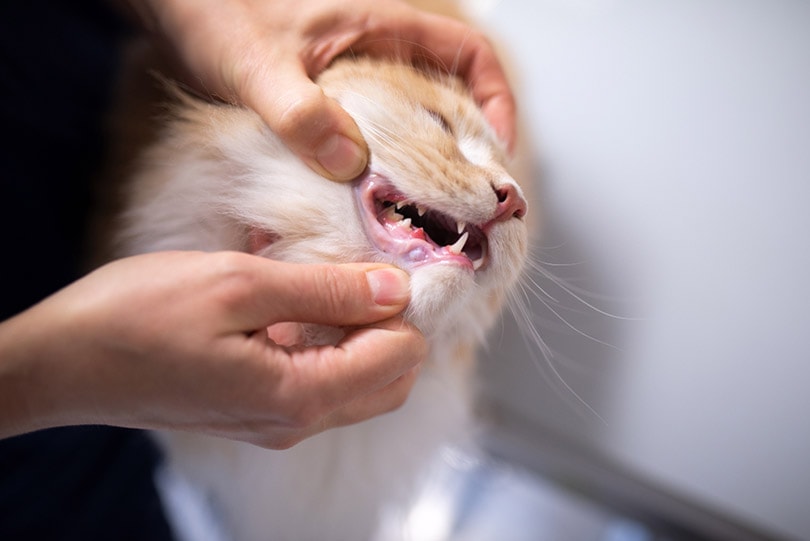
2. Obesity
Just like with humans, obesity is a growing problem in domestic cats, and it can lead to a range of other health problems. Cats who are overweight or obese are more prone to conditions such as diabetes mellitus, arthritis, and heart disease. Obesity prevention is key since once a cat gains weight, it can be a challenge to reduce its weight back down to normal. Weight loss isn’t impossible, but it can be difficult for cat owners to manage, especially with multi-cat households.
Cat owners can prevent obesity in their cats by regularly monitoring their weight and overall body condition, making sure that they are getting enough exercise, and receiving a balanced diet without too many calories. Your veterinarian can provide advice on the correct number of calories your cat should receive based on their physical condition, age, and lifestyle.
3. Upper Respiratory Infections
Upper respiratory infections (URI) are very common, especially in cats and kittens who live in close proximity to one another, such as in shelters or multi-cat households. These infections, or “kitty colds”, can be caused by a variety of viruses and bacteria. Common signs of a URI include runny and inflamed eyes, runny or congested nose, sneezing, coughing, poor appetite, and fever. In severe cases, these infections can lead to pneumonia. Several common URI viruses are part of the typical cat vaccine that your veterinarian routinely recommends.
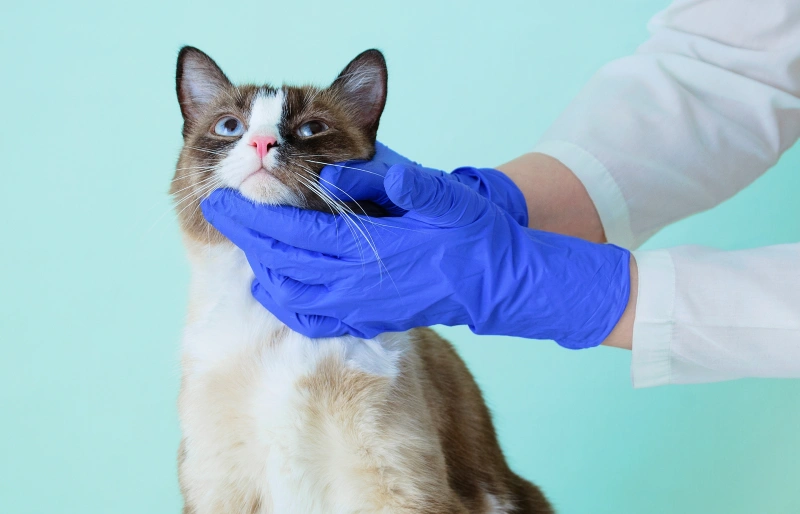
4. Urinary Tract Disease
Urinary tract disease can include bladder inflammation (also known as cystitis or feline lower urinary tract disease), bladder stones, urethral obstruction, and urinary tract infections. Common signs of urinary tract disease include frequent trips to the litter box, straining to urinate, blood in the urine, and urinating outside the litter box.
If you notice any changes in your cat’s urination habits, it’s important to have your cat checked by a veterinarian, especially if they are straining to urinate. Male cats are more prone to urethral obstruction, which can be life-threatening and requires immediate veterinary attention. Stress, environmental enrichment, and litter box hygiene are important factors in feline lower urinary tract disease. It is best to have one litter box per cat plus one extra in a home.
5. Hyperthyroidism
Hyperthyroidism is a condition caused by an overactive thyroid gland that produces too much of a certain type of hormone. This hormonal condition is quite common in middle-aged and older cats. The most common signs include weight loss, increased appetite, and restlessness. Sick cats with hyperthyroidism often are very vocal, experience vomiting or diarrhea, and increased thirst and urination. If left untreated, this condition can result in adverse health effects on the body, including heart disease and high blood pressure.
Your veterinarian can help diagnose this common condition and can recommend one of the many treatment options.
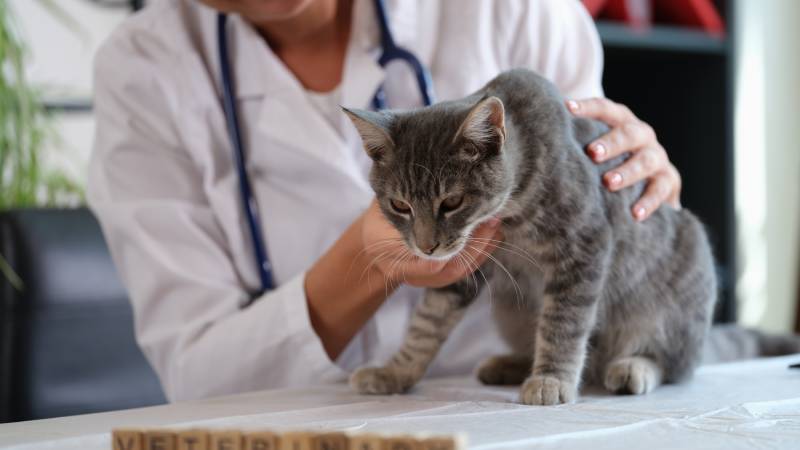
6. Chronic Kidney Disease
Chronic kidney disease is another common condition in senior cats. The most common signs of chronic kidney disease include increased thirst, increased urination, weight loss, and decreased appetite. Cats sick with chronic kidney disease also sometimes vomit or appear nauseous (drool, gag, or quickly turn away from a meal).
Unfortunately, chronic kidney disease cannot be cured, but in many cases, the chronic condition can be managed with a combination of medications, diet changes, and other supportive treatments. If you are worried about chronic kidney disease in your cat, your veterinarian can diagnose this common condition with standard blood and urine tests.
7. Parasites
Parasites are especially common in cats that spend time outdoors or with other animals who go outdoors. A parasite is an organism that lives on or inside of a host and feeds off the host. Parasites can be external, living on the skin, like fleas, ticks, and mites. Parasites can also be internal, living inside the body (often in the gastrointestinal tract). Internal parasites include a variety of worms, such as roundworms, hookworms, and heartworms, as well as other types of microscopic parasites, like coccidia and giardia.
Depending on the parasite, your cat can show various signs. Fleas often cause cats to have itchy, irritated skin as well as visible black specks in the fur known as “flea dirt” (flea feces). With fleas feeding on your cat, your cat can become anemic or become sick with an infectious disease transmitted by flea bites. If your cat goes outdoors, they are also prone to ticks and their skin should be regularly checked for ticks. Several flea prevention products for cats also protect against ticks. It is important to note that certain flea-prevention products meant for dogs are toxic for cats.
With internal parasites, your cat can show signs of gastrointestinal upset (e.g., vomiting, diarrhea) or even dehydration and weight loss. Some parasites can infect your cat’s heart and lungs, which can lead to coughing, wheezing, and other breathing problems, and in some cases, sudden death.
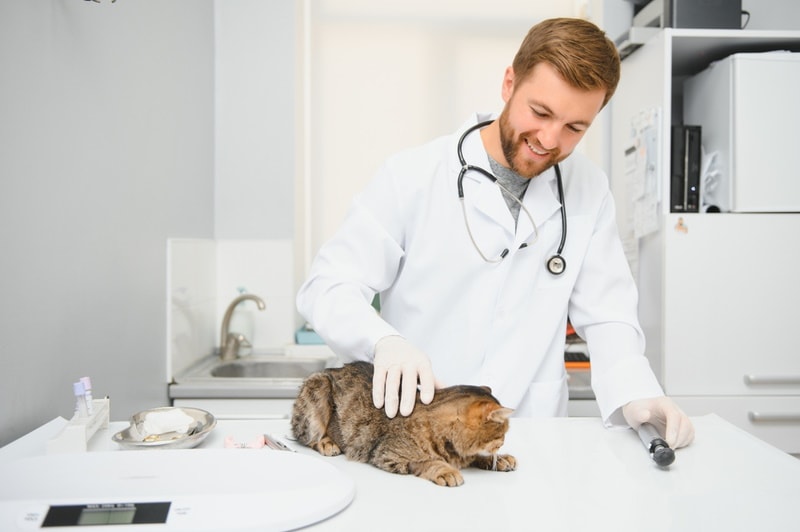
Conclusion
Many signs of illness in cats can be vague and subtle, especially as cats tend to hide their illness well. Many of the conditions mentioned above can be identified, prevented, or managed through routine veterinary examinations, vaccinations, anti-parasite medications, and feeding a well-balanced diet with free access to water. For other conditions like hyperthyroidism and chronic kidney disease, your veterinarian can diagnose these conditions through routine lab testing. Checking these tests on an annual basis can be especially helpful as your cat ages.
As always, if you notice any changes with your cat, it is best to seek advice and evaluation from a veterinary professional.
See Also:
- Kitten Health Issues: 9 Signs to Look For (Vet Answer)
- Osteomyelitis in Cats: Causes, Prevention, & Signs (Vet Answer)
Featured Image Credit: Andy Gin, Shutterstock







